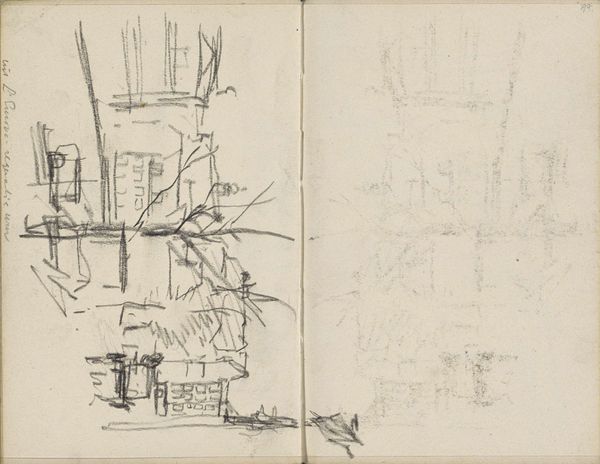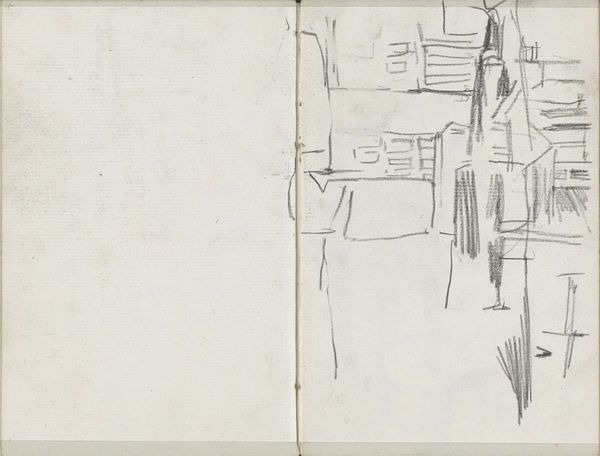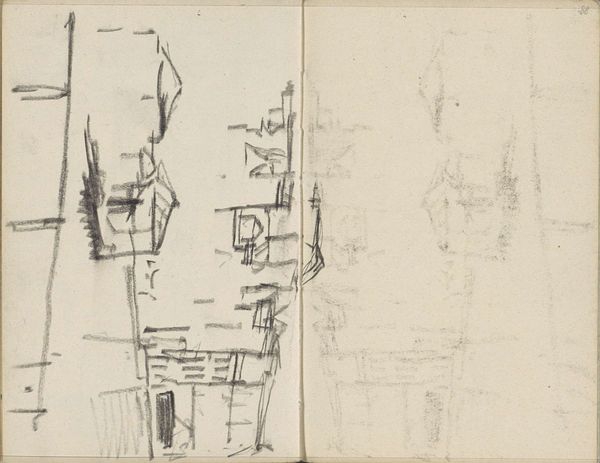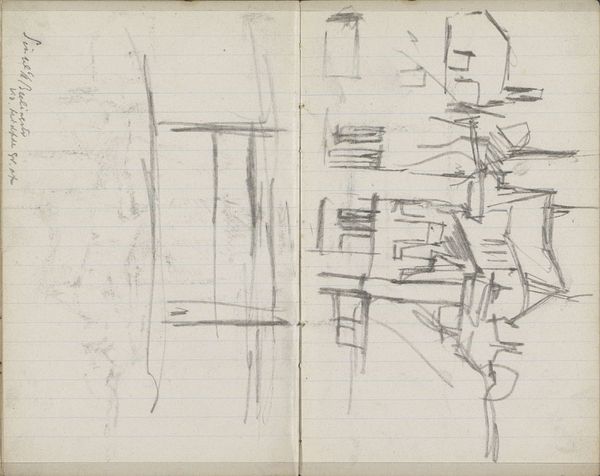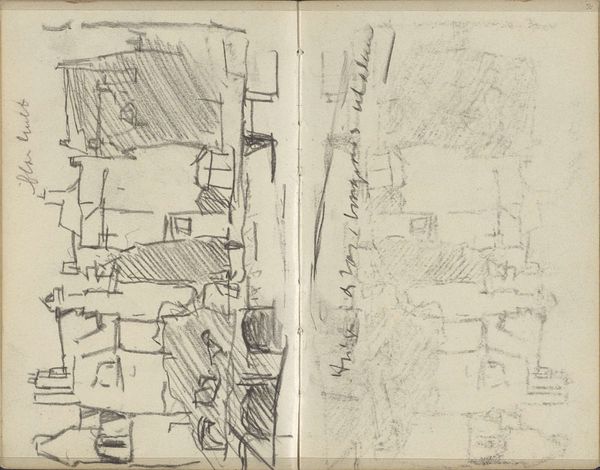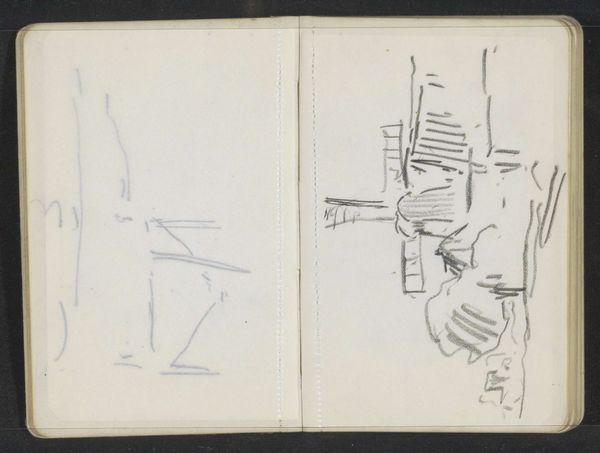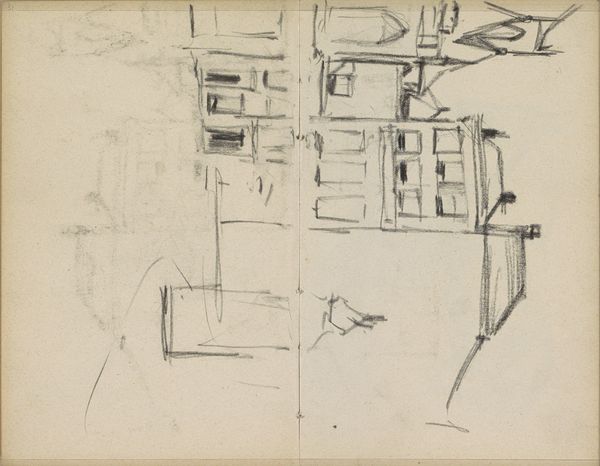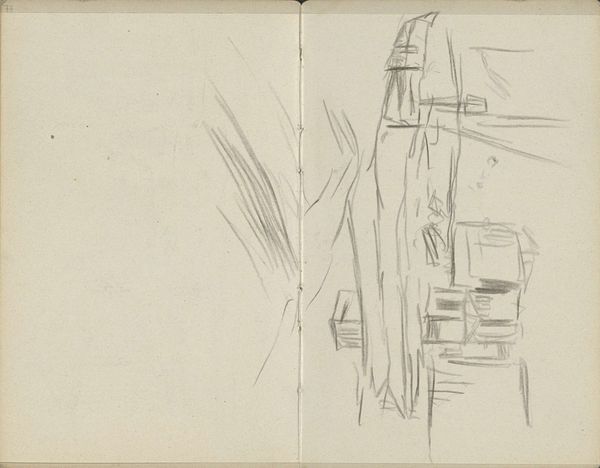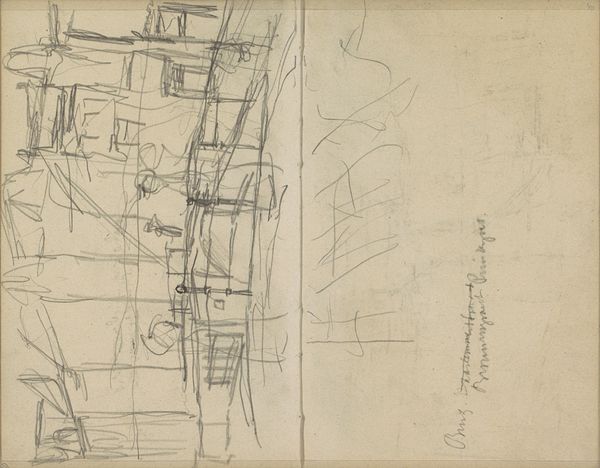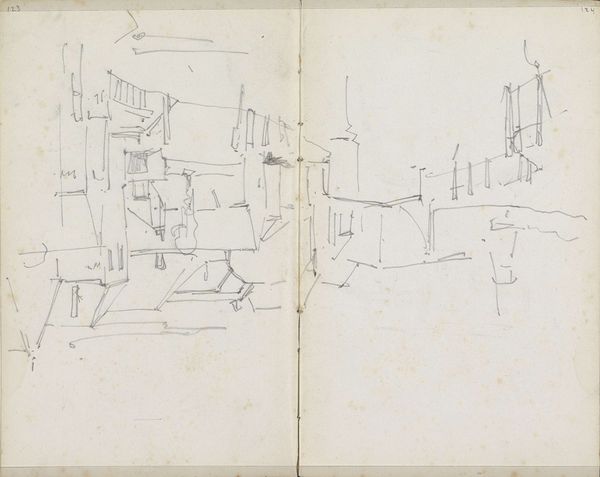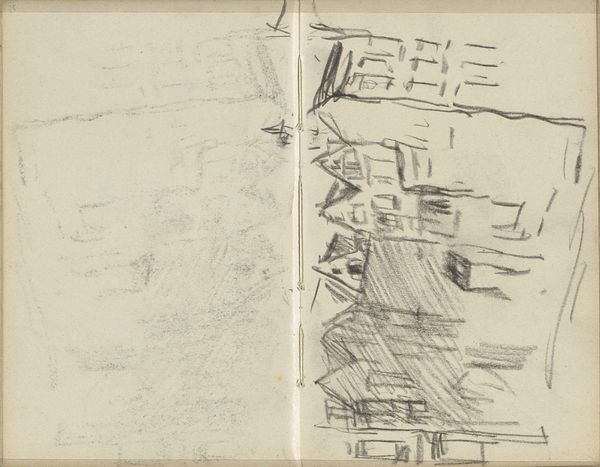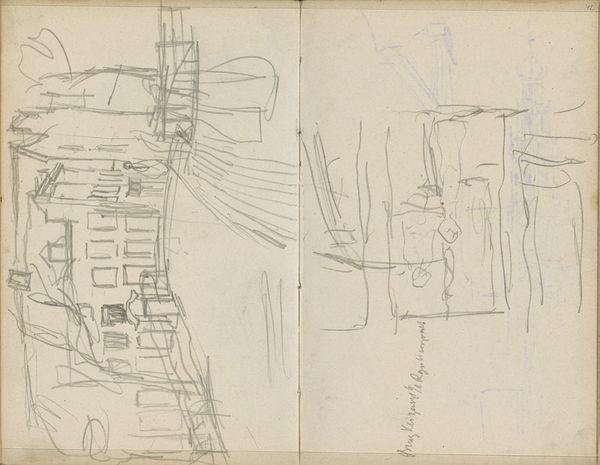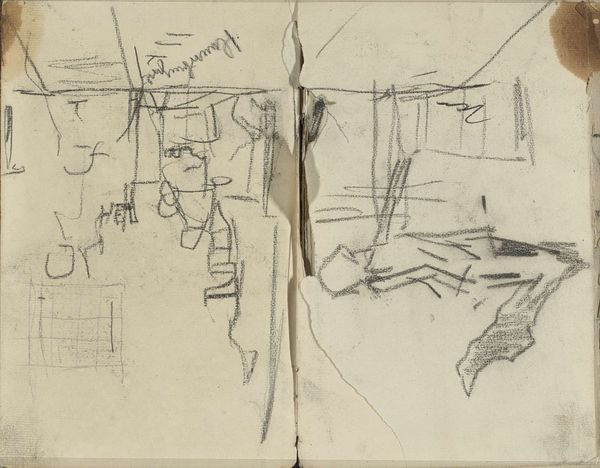
drawing, ink, pen
#
drawing
#
amateur sketch
#
impressionism
#
incomplete sketchy
#
hand drawn type
#
personal sketchbook
#
ink
#
idea generation sketch
#
sketchwork
#
ink drawing experimentation
#
sketch
#
pen-ink sketch
#
sketchbook drawing
#
pen
#
cityscape
#
sketchbook art
#
building
Copyright: Rijks Museum: Open Domain
Curator: Here we have a page torn from George Hendrik Breitner's sketchbook, created between 1880 and 1882. It’s a pen and ink drawing, currently held at the Rijksmuseum. It captures a "Gebouw met trapgevel," or building with a stepped gable. Editor: It feels ephemeral, like a memory glimpsed out of the corner of your eye. The lines are so light and fleeting. There's a sketch of a bridge off to the left, a pale echo of its surroundings. Curator: That immediacy reflects the spirit of the times. Breitner and his contemporaries were capturing modern urban life in ways that felt utterly new. The sketch gives insight into artistic idea generation, showcasing how he identified key architectural features. This sketch seems to embrace incompleteness. Editor: I think the incompleteness adds to the emotional weight. We see this familiar Dutch gable house reduced to its essence – stark lines, a shadow here and there. It’s almost archetypal, reminding us of similar buildings throughout art history, these forms carry centuries of cultural resonance with merchants, guilds, and urban development. Curator: Yes, Breitner positions himself in the center of a growing metropolis, so those historical and contemporary aspects of imagery must carry their weight, I'd agree. You see his urban subjects depicted through this gritty style of impressionism. The quick pen strokes were so unlike the more formally rendered cityscapes that came before. Breitner chose deliberately not to portray an idealized Amsterdam, instead choosing to represent a fleeting reality. Editor: And these quick notations speak volumes. It makes you wonder about his relationship to the neighborhood. Did he admire the architecture, the resilience of these historical urban landscapes? Curator: Precisely. In the latter half of the 19th century, Amsterdam was undergoing rapid transformations. Older structures were threatened with demolition. Editor: Perhaps he captured it to preserve something vanishing. The simple, skeletal imagery transforms into an emotional attempt to grasp cultural memory, evoking personal feelings towards that quickly evolving environment. Curator: I see what you mean. In that sense this drawing isn't just a document of urban architecture. It is a signifier that indexes a broader, ongoing negotiation of modernity and heritage in Amsterdam. Editor: It does offer more than meets the eye. A passing thought from the artist that still evokes such historical memory today.
Comments
No comments
Be the first to comment and join the conversation on the ultimate creative platform.
